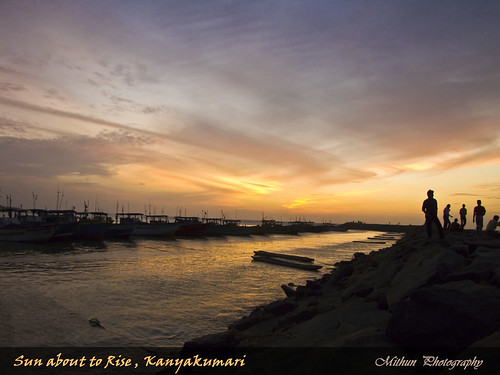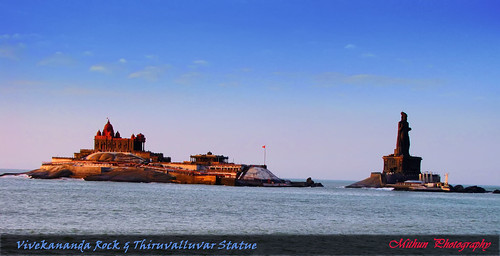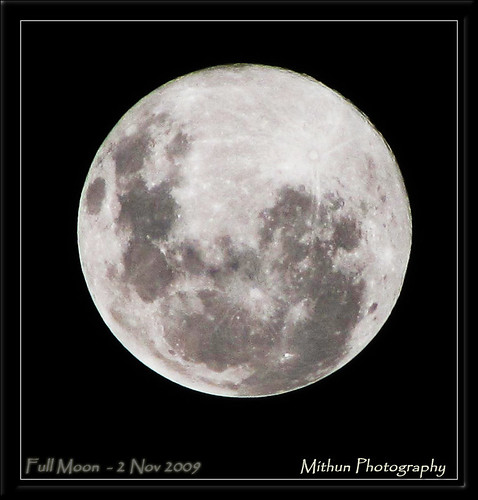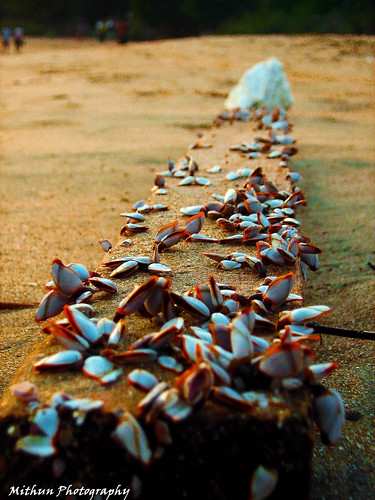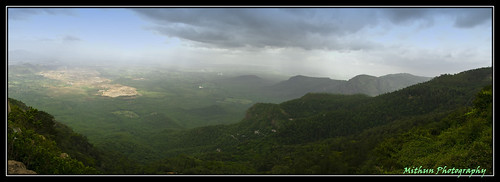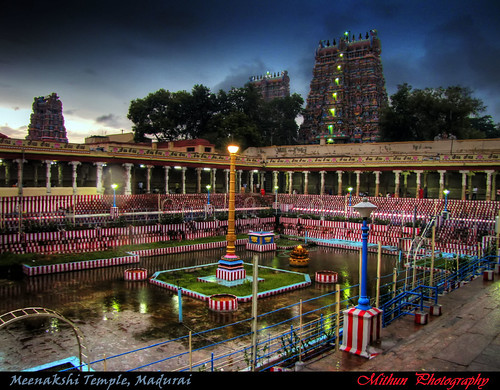Vivekananda Rock Memorial & Thiruvalluvar Statue, Kanyakumari
Vivekananda Rock Memorial is a sacred monument and popular tourist attraction in Kanyakumari, India. The memorial stands on one of two rocks located about 500 meters off mainland India's southernmost tip. It was built in 1970 by the Vivekananda Rock Memorial Committee in honour of the visit of the great spiritual teacher Swami Vivekananda to Shripada Parai during the month of December 1892 for deep meditation and enlightenment. He swam to this rock and meditated about the past, present and future of India. It is said that he attained enlightenment on the rock, and henceforth became a reformer and philosopher.
From very ancient times, the rock has been regarded as a sacred place. The mythical tradition states that it has been known as 'Sripada Parai', meaning the rock that has been blessed by the touch of ‘the sacred feet’ of the Devi Kumari. On the rock is a projection similar in form to a human foot and a little brownish in complexion, which has traditionally been venerated as a symbol of Shripadam. According to legend, it was on this rock that Devi Kumari performed austerity.
A meditation hall (Dhyana Mandapam) is also attached to the memorial for visitors to meditate. The design of the mandapa incorporates different styles of temple architecture from all over India. It houses a statue of Vivekananda. The merger of three seas - Bay of Bengal, Arabian Sea and Indian Ocean can be seen from these rocks.
The memorial consists of two main structures, the Vivekananda Mandapam and the Shripada Mandapam.
The Thiruvalluvar Statue is a 133 feet (40.5 m) tall stone sculpture of the Tamil poet and saint Tiruvalluvar, author of the Thirukkural. It was opened in January 1, 2000 (Millenium) and is located atop a small island near the town of Kanyakumari, where two seas and an ocean meet; the Bay of Bengal, the Arabian Sea, and the Indian Ocean . The statue has a height of 95 feet (29 m) and stands upon a 38 foot (11.5 m) pedestal that represents the 38 chapters of "virtue" in the Thirukkural. The statue standing on the pedestal represents "wealth" and "pleasure", signifying that wealth and love be earned and enjoyed on the foundation of solid virtue.
The combined height of the statue and pedestal is 133 feet (40.5 m), denoting the 133 chapters in the Thirukkural. It has a total weight of 7000 tons.
The statue, with its slight bend around the waist is reminiscent of a dancing pose of the ancient Indian deities like Nataraja. It was sculpted by the Indian sculptor Dr. V. Ganapati Sthapati, who also created the Iraivan Temple.
You can visit my Flickr posts @
http://www.flickr.com/photos/mithunkundu/
My WoRdPrEsS blogs @
http://mithunkundu.wordpress.com/
You can me catch me on Facebook @
http://www.facebook.com/#!/profile.php?id=100000525746657
Follow me on Twitter @
http://twitter.com/mithunkundu1983



